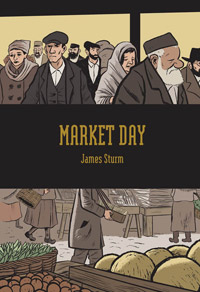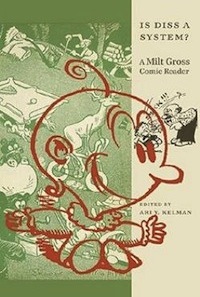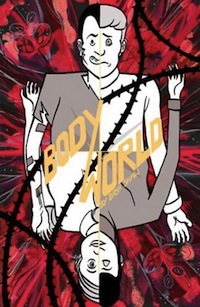Beats a Full House

I am not au courant with the latest taxonomical view of what was (and still is, I suppose) at one point referred to as the “graphic novel.” Though that rubric may be troublesome, other possibilities are no less insufficient—comic books, cartoons, still movies. In any case, what is clear is that such image-based narratives have stories to tell and do so with a variety of techniques and skills. Unfortunately, this genre has been ghettoized—which is, I suppose, implicit in the notion of genre.
James Sturm first came to my attention with his splendid history, James Sturm’s America, which led my attention to his wonderful profile (with Rich Tommasio) of baseball great Satchel Paige in what was ostensibly a children’s book (albeit for kids of all ages), Satchel Paige: Striking Out Jim Crow.
Now comes Sturm’s newest offering, Market Day (Drawn & Quarterly), a fiction set in fin-de-siècle Eastern Europe. Mendelbaum is a craftsman who makes handmade rugs, and we follow a day in his life as he travels from his stetl to a larger village. Through Sturm’s skillful visual rendering we gain insight into Mendelbaum’s creative process—how this artist translates the images he sees into the tangible art.

University of California mentor Ari Y. Kelman has edited a wonderful contribution of art and cultural history with Is Diss a System? A Milt Gross Comic Reader (New York University Press). Cartoonist/animator Gross was born in the Bronx and rose to fame in the late 1920s with innumerable comic strips and newspaper columns and a handful of books (Nize Baby, De Night in de Front from Chreesmas, Hiawatta, Dunt Esk, and Famous Fimmales) that employed Jewish ethnic humor and captured the quintessence of Jewish immigrant life. Kelman introduces his anthology of Milt Gross’s work with an illuminating essay and aptly selects examples that establish him as an influential forebear of Jewish humor in America.
In a more contemporary (if not futuristic) vein comes Eisner Award-nominee Dash Shaw (Bottomless Belly Button, the highly regarded 720-page family epic published by Fantagraphics) with his new opus Body World (Pantheon).

Originally serialized online (where you can still read/view it), Shaw has reformated the art for a book format. Set in post-civil war 2060 with Paulie Panther, a botanist for the protagonist, the plotline follows his investigation of a strange new plant that, when smoked, imparts telepathic powers. Apparently the botanist’s new acquaintances do not look upon his discovery and experimentation with favor, especially when he wreaks havoc in his wake.
I suppose there are readers who can thrive on a steady diet of these kinds of narrative iterations—and if they were all this compelling I can understand why. But even if you are more textually/typographically inclined, the talent, imagination, and creativity in evidence in the above noted tomes should carry the day (or two).
